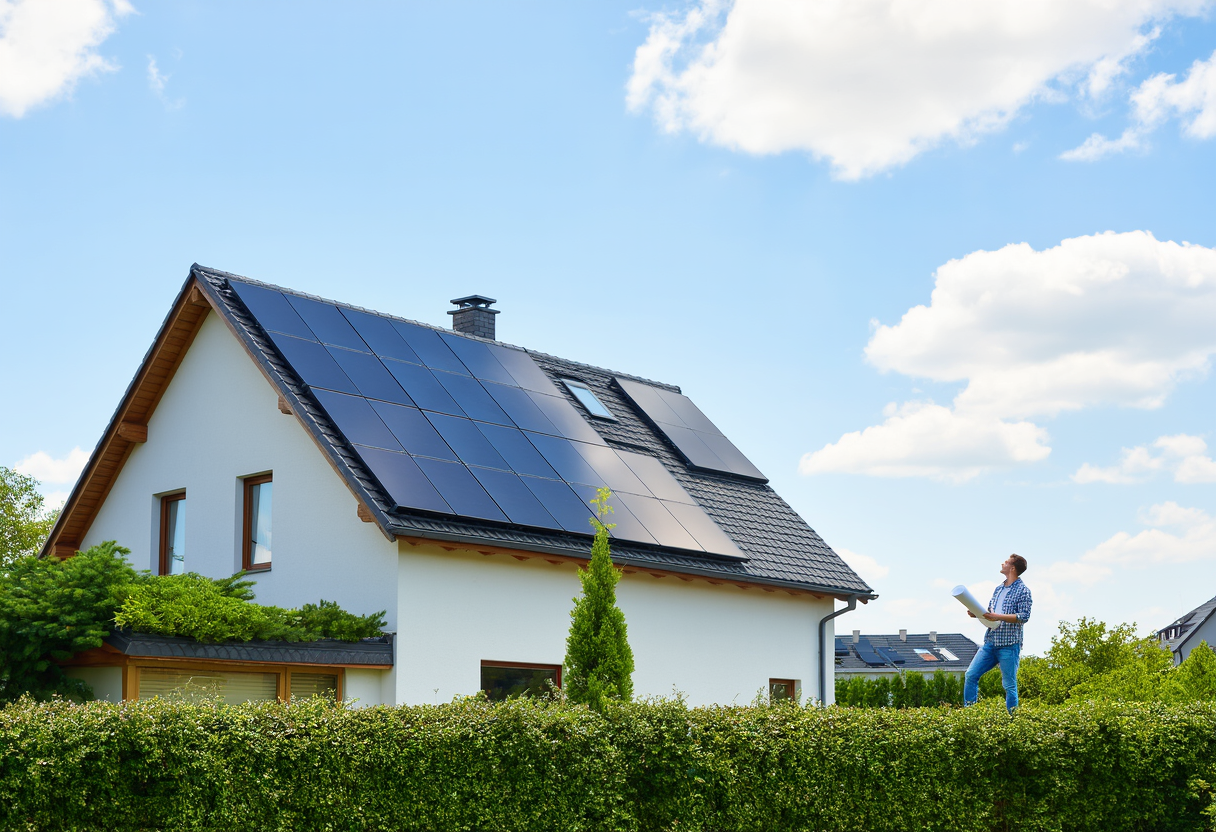Exploring Solar Thermal Collectors: A Smart Investment for Sustainable Energy
Solar thermal collectors are becoming increasingly popular as a sustainable energy solution. This article dives into their functions, benefits, and potential as a smart investment for both households and businesses. By utilizing solar energy, these systems not only help in reducing energy bills but also contribute significantly to environmental conservation. Join us as we explore how solar thermal collectors can transform energy consumption and promote a greener future.
Understanding Solar Thermal Collectors
Solar thermal collectors play a crucial role in harnessing solar energy for heating applications. These devices capture sunlight and convert it into heat, which can be used for various purposes, including space heating and hot water supply. Solar thermal collectors work by using a dark surface that absorbs sunlight; this surface heats a fluid that is circulated through the system. The efficiency and design of solar thermal collectors significantly impact their performance, making it essential to choose the right type for specific needs. There are various types of collectors, including flat-plate, evacuated tube, and concentrating solar collectors, each with distinct advantages and applications. Understanding their functioning is key to maximizing the benefits of solar thermal collectors in energy systems.
In today's context, embracing solar thermal collectors is more than just a trend; it's a conscious choice towards sustainability. As energy costs continue to rise, homeowners and businesses alike are looking for renewable solutions that not only minimize expenses but also help combat climate change. Moreover, governments around the world are offering incentives for adopting renewable energy technologies, including solar thermal systems. Such policies encourage the adoption of solar thermal collectors and can lead to substantial savings over time. The payback period for these systems can be notably short, depending on energy prices and local incentives, making the financial return on investment attractive.
Benefits of Solar Thermal Collectors
The benefits of solar thermal collectors are numerous and diverse. Firstly, they reduce reliance on fossil fuels, significantly contributing to lower greenhouse gas emissions. By utilizing solar energy, users not only save money on their energy bills but also align with global efforts to promote clean energy. Additionally, solar thermal systems require minimal maintenance, which follows their installation, further enhancing their economic appeal. Various applications, from residential use to large-scale industrial operations, demonstrate the versatility of solar thermal collectors, making them a suitable choice for numerous scenarios. Furthermore, advances in technology continue to improve the efficiency and accessibility of these systems, fostering wider public adoption.
However, it's essential to consider the upfront investment and the initial setup costs associated with solar thermal collectors. While the long-term savings can offset these costs, potential users should assess their specific energy needs and local climate conditions. Local weather plays a significant role in the functioning of solar thermal systems; areas with ample sunlight may witness higher efficiency and better returns. Analyzing and calculating potential savings, improvement in comfort levels, and contribution towards sustainability can motivate choices favoring solar thermal collectors over traditional energy solutions. Furthermore, the integration of these systems with existing infrastructures can lead to enhanced overall energy performance.
Global Trends and Future of Solar Thermal Collectors
As global energy demands continue to rise, the need for sustainable solutions is becoming increasingly urgent. The market for solar thermal collectors is expected to grow significantly as more individuals and businesses recognize their value. Recent technological innovations have led to the development of new materials and designs, enhancing the efficacy of these systems while reducing costs. Countries investing heavily in renewable energy sources are likely to see an uptick in solar thermal applications, transforming energy production and consumption patterns. The adoption of solar thermal collectors in emerging economies will also aid in reducing energy poverty and promoting economic growth. As awareness and understandings about climate change deepen, public demand for renewable energy solutions will likely spur further advancements in solar thermal technology.
Innovative Applications of Solar Thermal Systems
Apart from conventional applications, solar thermal collectors can be innovatively integrated into building designs and urban settings. Architectures that incorporate solar thermal systems not only cater to energy needs but also promote aesthetic designs, merging functionality and sustainability. Creative uses of solar thermal technology in outdoor heating applications, swimming pools, and agricultural processes showcase its versatility. The agricultural sector, in particular, can utilize solar thermal collectors for crop drying and greenhouse applications, significantly improving efficiency. Innovations in smart technology allow homeowners to control their solar thermal systems remotely, optimizing usage and enhancing convenience. These innovative applications will determine the future landscape of energy solutions and highlight the crucial role of solar thermal collectors.
In summary, investing in solar thermal collectors can be an extremely beneficial decision for reducing energy costs while being environmentally responsible. The implications of their adoption extend beyond immediate financial benefits; they contribute to a longer-term sustainable energy paradigm. As technology progresses and market acceptance grows, these systems will continue to evolve, offering even more opportunities for integration and efficiency. Embracing solar thermal collectors helps pave the way toward a more sustainable future while inspiring others to consider renewable energy options.
